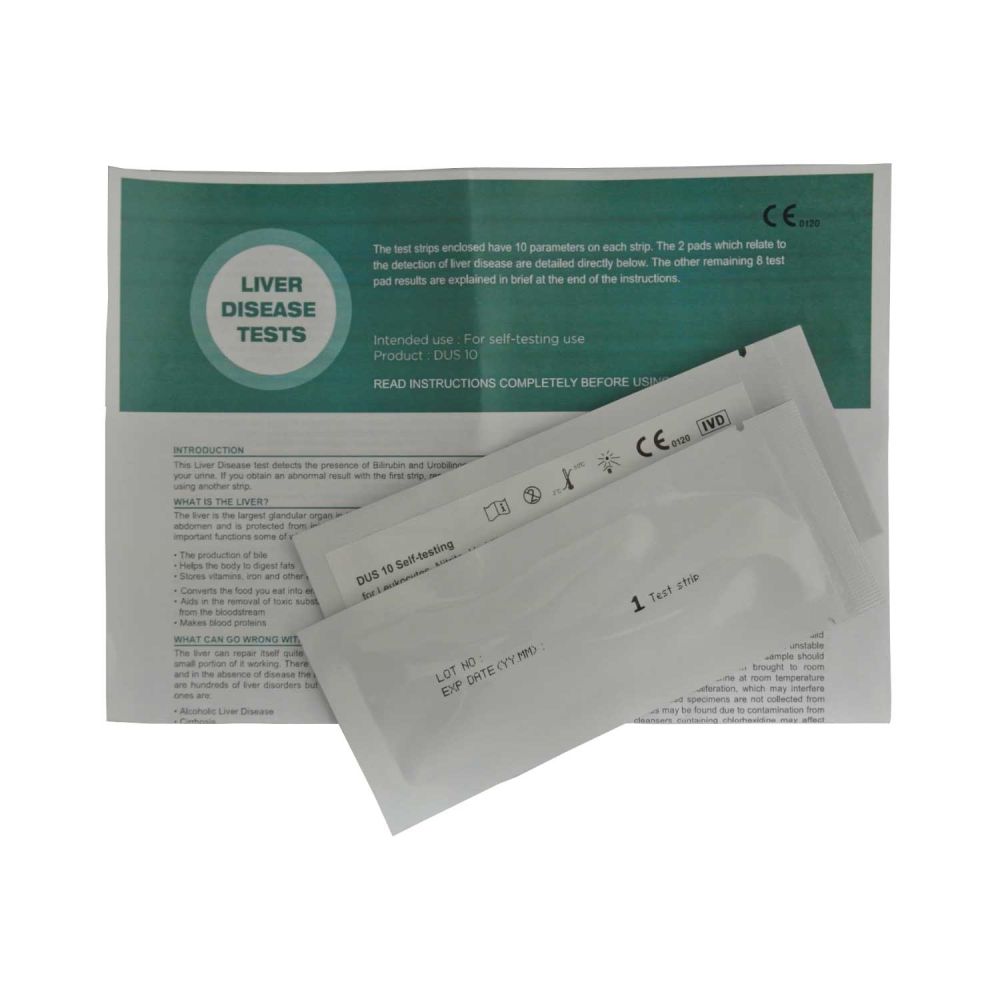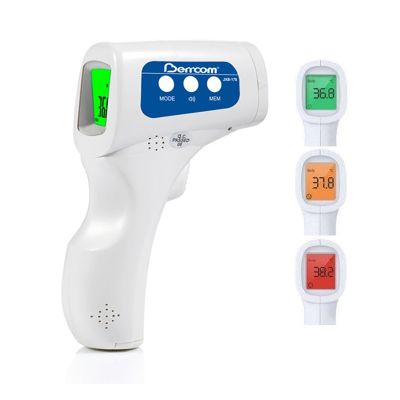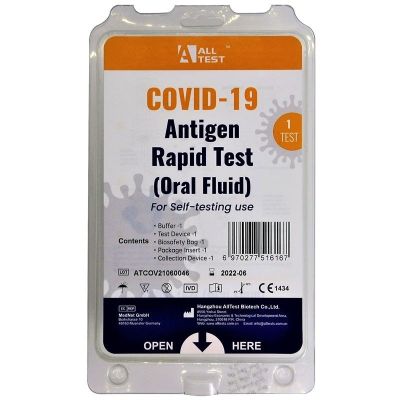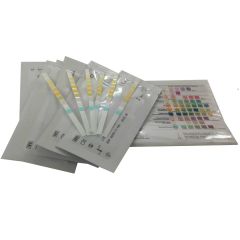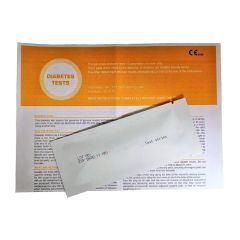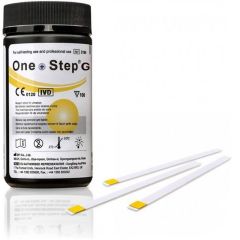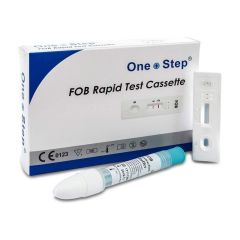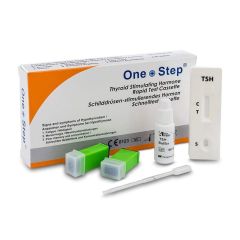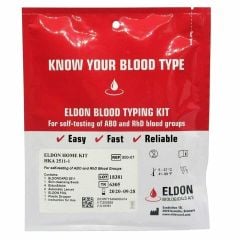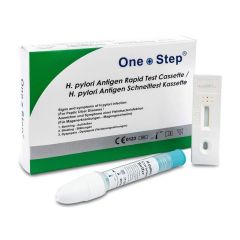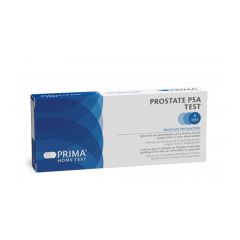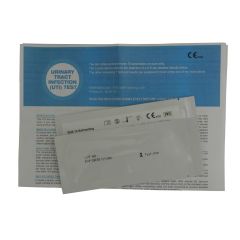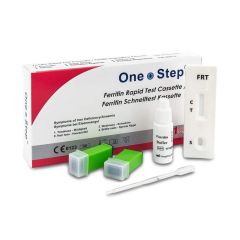HOME LIVER FUNCTION TEST X 2
What does this test involve?
Collect urine in a pot and dip the test strip into the urine and read the results after 30-60 seconds.
Each test strip will test for Bilirubin and Urobilinogen.
How do I read the test result?
The test results are easily read by comparing the color of the test result against the colors shown on the accompanying color chart. The higher the level of Bilirubin and or Urobilinogen the darker the test result will become.
The test comes with full instructions in the pack which gives a full interpretation of the test, whatever the combination of results and advises what to do next if any action is required.
Liver disease refers to any disease or disorder that causes the liver to stop functioning as it should, examples of liver disease are cirrhosis and hepatitis.
This liver test detects abnormal levels of bilirubin and urobilinogen in urine, raised levels can indicate liver disease. It is recommended that you take this test if you are feeling generally unwell or are experiencing any of the following:
- Nausea
- Fatigue
- Lack of appetite
- Yellowing of the skin and eyes
Why do I need this test?
Because of its location and many functions, the liver is prone to many diseases such as hepatitis A, B, C, E, alcohol damage, fatty liver, and cirrhosis. There are over one hundred types of liver disease and they affect millions of people in the UK. This figure may only be the tip of an iceberg as many cases of liver disease remain undiagnosed. This is because your liver is very resourceful and able to work well enough even when it may be damaged. This means that you may often not ‘present’ with clear symptoms, or show obvious sign of liver disease or illness.
This simple home screening test can help to identify the health of your liver by checking for Bilirubin and Urobilinogen levels in your urine.
Urobilinogen is normally present in low concentrations in urine. High levels of Urobilinogen can indicate liver disease or conditions associated with the increased breakdown of red blood cells.
Bilirubin is a brownish yellow protein usually excreted in bile. It is produced when the liver breaks down old red blood cells. Bilirubin is not usually found in normal urine. The presence of Bilirubin in urine is an early indicator of liver disease, obstruction of the bile duct or hepatitis. If urine contains Bilirubin it can make the color of urine quite dark.
Pack Contents
2 Test pack contains 2 individually foiled test strips.
WARNING AND PRECAUTIONS
For in vitro diagnostic use only.
All test strips within each foil will need to be used immediately once that foil has been opened.
STORAGE AND HANDLING
Store in a cool, dry place at temperatures between 2℃ ~ 30℃. Do not store the strips in a refrigerator or freezer. Store away from moisture and light. As long as the foil pouch has not been opened, the product is stable up to the expiry date printed on the foil. Do not touch test areas of urine reagent strips. Do not open foil pouch until ready to use. All test strips will need to be used immediately once the foil has been opened.
Discoloration or darkening of the test pads may indicate deterioration. If this is evident, or if test results are questionable or inconsistent with expected finding, confirm that the product is within its expiration date and is reacting properly using known negative and positive control materials. Do not use after the expiry date.
SPECIMEN COLLECTION AND PREPARATION
Collect urine in a clean, dry container that allows complete immersion of all the fields on the test strip. Do not add preservatives. Test the specimen as soon as possible, with the sample well mixed but not centrifuged. The use of fresh morning urine is recommended for optimal nitrite tests, as well as for the valid determination of bilirubin and urobilinogen since these compounds are unstable when exposed to light. If immediate testing is not possible, the sample should be stored in the refrigerator, but not frozen, and then brought to room temperature before used in the test. Unpreserved urine at room temperature may undergo pH changes due to microbial proliferation, which may interfere with protein determination. If cleanly voided specimens are not collected from females, positive results for leukocytes may be found due to contamination from outside the urinary tract. Skin cleansers containing chlorhexidine may affect protein test results if specimen contamination occurs.
VISUAL TEST PROCEDURE
The procedure must be followed exactly to achieve reliable results. Do not compare strips with color chart before the strip is dipped in urine.
1) Dip the strip into the urine up to the test area, ensuring all reagent pads are fully immersed. Dip for no more than two seconds.
2) Draw the edge of the strip along the brim of the vessel to remove excess urine; at this time, don’t make the test areas touched to the brim of the vessel.
Turn the strip on its side and tap once on a piece of absorbent material to remove any remaining urine; Excessive urine on the strip may cause the interaction of chemicals between adjacent reagent pads, so that an incorrect result may occur.
3) Compare the colors of the reagent pads exactly after 60 seconds (Leukocytes after 90~120 seconds) with the color chart on the vial label under good light. While comparing, keep the strip horizontally to prevent possible mixing of chemicals when excessive urine is present.
RESULTS:
Test results should be read at 60 seconds but no longer than 2 minutes as this could give an inaccurate reading.
The results comparison chart for urobilinogen shows a line of 5 colors starting with 2 normal results and then three positive ranges which get darker the higher the levels detected. The readings read from, 0.1 mg/dl or 16mmol/L, 2mg/dl or 33mmol/L, 4mg/dl or 66mmol/L, and lastly 8mg/dl or 131mmol/L these are indicated by a peach color through to dark pink.
The results comparison chart for bilirubin shows a line of 4 colors starting with a negative result and then three positive ranges which get darker the higher the levels detected.
Compare the strip to the color comparison chart. Compare each test individually, if the color pad on the strip is the same color as the negative reading on the comparison chart then no urobilinogen or bilirubin has been detected in your urine.
If there is a small change of color, repeat the test again the following day and if a similar result appears again then you should consult your doctor for advice. A high level means that the test has found excess urobilinogen or bilirubin in your urine. This does not always mean that you have a liver condition. However, it is very important that you visit your doctor to discuss your test result.
If the result was negative this means at this time no excess urobilinogen or bilirubin was found in your urine. If the result is negative and you do not have any symptoms, you do not need to do anything else. However, you should visit your doctor if the result was negative but you are experiencing any of the associated symptoms mentioned above:
INTERPRETATION OF ADDITIONAL 8 TEST PAD RESULTS
Results are obtained and interpreted by comparing the color of the test pads on the strip with the color blocks printed on the color chart. In the event of unexpected or questionable results, confirm that the strips have been used before the expiry date printed on the pack then repeat the test using a new strip.
If the results are outside the normal levels (see below), consult your doctor.
NOTE: DO NOT TAKE ANY MEDICAL DECISION WITHOUT CONSULTING YOUR DOCTOR.
Nitrite: Any degree of uniform pink to red color should be interpreted as a positive result and you should consult your doctor. Viewing the test against a white background may help the detection of low levels of nitrite, which might otherwise be missed. Pink spots or pink edges should not be interpreted as a positive result.
Protein: If your result is 30mg/dL (0.3g/L) or more, consult your doctor.
Specific Gravity: A single low reading or a single high reading does not indicate a problem (see Principle and Expected Values). However, persistent low or high readings over a period of time should be checked by your doctor. High protein levels in urine (more than 300mg/dL) can cause high specific gravity results.
Blood: A positive (+) result may be seen as either a uniform color change of the test pad or the appearance of green spots on the test pad (see color chart). If either type of positive result is obtained, consult your doctor.
Note: Strenuous exercise can cause blood to appear in urine and blood is often found in the urine of menstruating women. A uniform color change indicates the presence of hemoglobin or broken red blood cells in the urine. Green spots on the test pad indicate the presence of intact red blood cells (erythrocytes)
Glucose: The results comparison chart for glucose shows a line of 6 colors starting with a negative result (pale blue) and then five positive ranges which get darker the higher the levels detected through to dark brown. If you get a positive result, consult your doctor.
Ketones: The results comparison chart for ketones shows a line of 6 colors starting with a negative result (pale pink) and then five positive ranges which get darker the higher the levels detected through to deep burgundy. If you get a positive result, consult your doctor.
pH: Urine values generally range from pH 5 to 9. If you receive a highly acidic or highly alkaline result, consult your doctor.
Leukocytes: If leukocytes are found in your urine sample the color of the test strip will change color and go dark pink or purple. If you get a positive result, consult your doctor.
Questions and Answers
Is there a certain time of day when I should carry out the test?
It is recommended that you test first thing in the morning since early-morning urine is the most concentrated. Women should not perform the test during or for three days after your menstrual period. The urine sample should not be contaminated with vaginal fluids since this may produce a misleading result.
If I dipped the strip in urine for more than a second will this affect the result?
If you left the strip in the urine for 2-3 seconds this will not affect the result but if left for more than 5 seconds the results could be inaccurate.
Why should I use a fresh sample for this test?
Bilirubin and Urobilinogen are sensitive to light and can decompose if left for a long time. Accordingly, the results may not reflect the actual concentration of these two compounds in the urine sample since they would be partly decomposed.
| Price | €9.99 |
|---|---|
| Pick Your Size | XL (A) |



